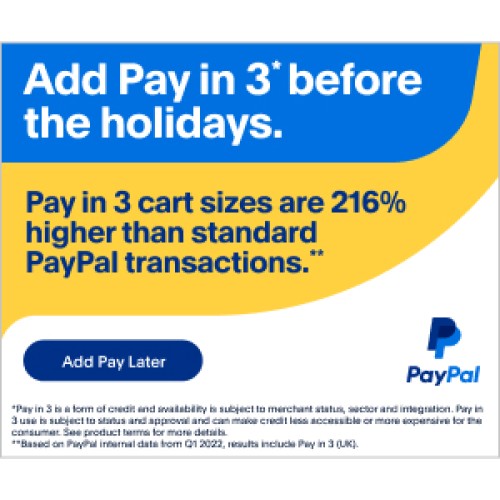Every e-commerce copy needs to be tested, and there's no arguing with that. Following this logic, you can create a few dozen e-commerce copies and see which will bring more value.
There is another way. You can create e-commerce copies using specific strategies and not experiment with your e-commerce website, spending a lot of money.
In recent years, such strategies have become numerous, and if we talk about them all at once, you get a mini-book. So let's focus on those suitable for writing e-commerce copies that convert.
Classic AIDA (Attention - Interest - Desire - Action) strategy
Famous AIDA strategy is the holy of holies of all copywriters. You should know it by heart. Today there is an opinion that this strategy is getting old, but it is still a "workhorse" of e-commerce copywriting.
AIDA is a logical chain of phrases that lead a person to think about buying:
A - attention. You should attract the potential client's attention so that he or she stops momentarily. That is, attract the attention of the potential buyer. Remember that you can attract attention with a catchy title, an image, an interactive 2D animation, and a sound!
I - interest. Here it is important not only to interest but also to keep the buyer's interest as long as possible. Demonstrate the benefits of the product or service.
D - desire. You should convince the customer that he or she will achieve his or her goal by making a purchase or ordering a service.
A - action. You should encourage them to purchase, offer to buy, visit the website, register, etc.
AIDA strategy was developed by American businessman Elias St. Elmo Lewis in 1898 and, over time, has undergone modifications.
AIDMA (we add Motivation (M)) is one of the modifications of the AIDA strategy. The idea is to motivate the client before the call to action.
PAS (Problem - Agitate - Solution)
Another popular writing strategy for e-commerce copies:
P - problem. You act on the client's problem, state its essence, and describe the client's life with the problem.
A - agitate. You get the client's attention, tell them how to solve the problem, or slightly exaggerate the consequences of neglecting it (no extremes).
S - solution. You tell how to act to solve the problem.
Essay Tigers has experienced writers profound in all the e-commerce writing strategies listed in this article. They can assist you with any of your writing problems.
PMHS (Pain - More Pain - Hope - Solution)
A tough but realistic writing strategy that sells:
P - pain. You should touch on the person's deep inner problem.
M - more pain. You amplify the effect with a description of the consequences and the presumed opinion of others about the client's problem.
H - hope. You assure the client that their pain is not a problem these days.
S - solution. You tell how to solve a client`s problem with your product or service.
PMHS is primarily used when working with not quite a target audience. We mean when people are not looking specifically for your product but may be interested (especially true for mass-produced goods).
Start your financial journey today. Check out exclusive stock market courses by FinGrad.
ODC (Offer - Deadline - Call to action)
This e-commerce writing strategy works the following way:
O - offer. You show the potential client an offer that is hard to refuse.
D - deadline. You indicate a time limit (artificial scarcity) for your offer, which increases demand.
C - call to action. You encourage the person to buy as quickly as possible.
If this strategy is used, the e-commerce text should be short. ODC strategy is especially great for mass and bulk email campaigns.
SCH (Star - Chain - Hook)
It is an easy strategy to remember but challenging to follow:
S - star. Your product/service/idea is presented so that you can't get past the entry.
C - chain. It is a series of facts and reasons for ordering/buying. You should convince the reader that your offer is as good as possible.
H - hook. You should catch customers and encourage them to act by using a call to action (CTA).
This strategy is similar to the previous ODC. In ODC, the second step was a time limit. In SCH, the second step is a chain of facts to transfer the interested customer into someone who wants to buy or solve a problem. Of course, if you don't have enough facts or benefits about your product, you might want to look at a different writing strategy.
Conclusion
Whether you are a beginner or an experienced freelance writer, the text strategies will facilitate your work and, if applied intelligently, increase sales of goods or services. The 5 writing strategies covered in the article are perfect for creating e-commerce copies; even with a little practice, you will quickly master them.
Essential tools for freelancers will even increase your productivity in applying these writing strategies. The main thing you need to understand before you sit down to write a selling e-commerce text - you have to learn how to influence emotions and look for benefits based on basic human needs. Everyone wants to be healthy, beautiful, happy, and loved.
Draw them a world in which they are, and your product is a connecting link between the current world and the one you describe. With your toys, the baby sleeps more soundly and doesn't cry. With your hairbands, your face looks fresher. With your handmade wallets, money is stored and not wasted.
Undoubtedly, different writing strategies are appropriate for different sales cases. While working on your e-commerce texts, choose 3-4 writing strategies for regular use. And remember, the best copywriting strategy is your own!



Login and write down your comment.
Login my OpenCart Account